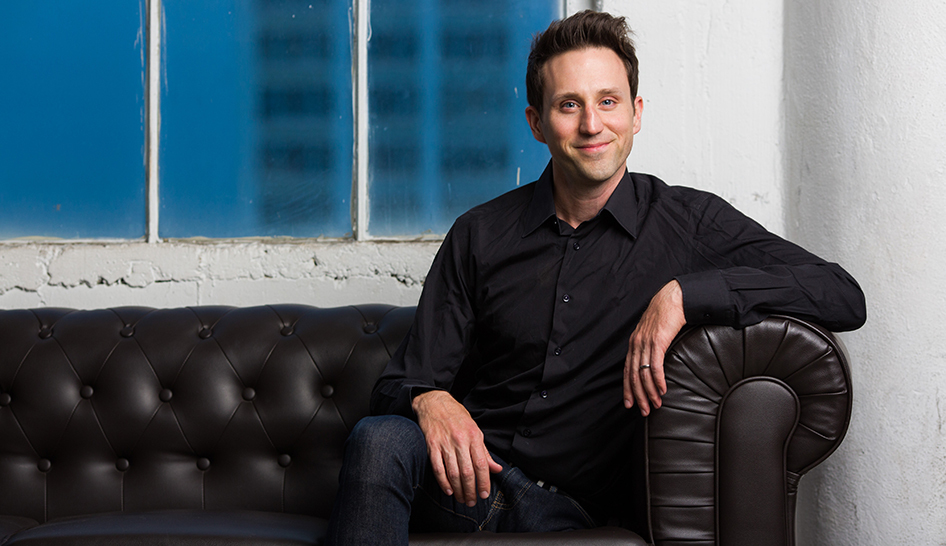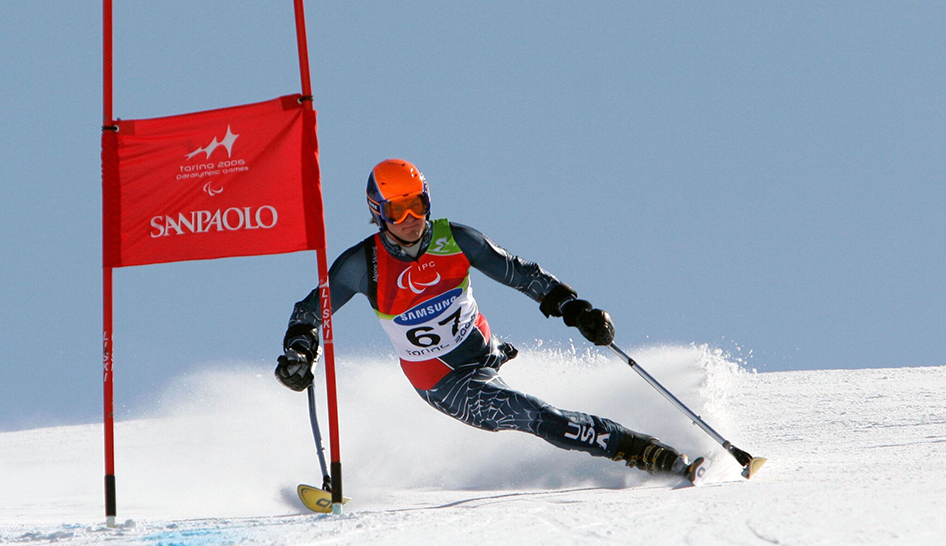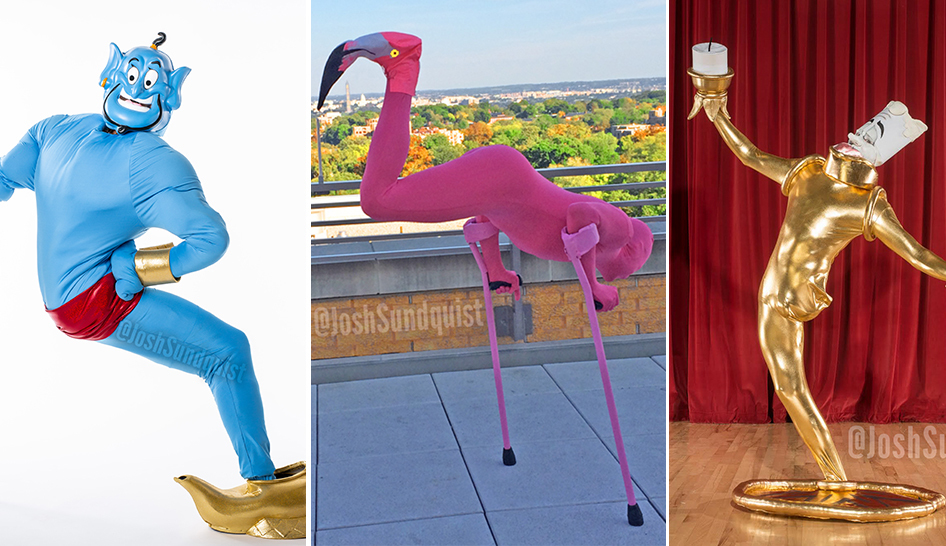Sundquist will discuss the importance of doing “One More Thing, One More Time” on Wednesday, March 18, from 10:30 a.m. to 12:30 p.m., during IHRSA 2020 in San Diego. His appearance is sponsored by Myzone.
This article appeared in the print edition of Club Business International in December 2019.
Paralympic Athlete Inspires with Motto ‘One More Thing, One More Time’
Author and comedian Josh Sundquist will discuss the meaning behind and the importance of “1mt1mt” at IHRSA 2020.

An author and motivational speaker, Josh Sundquist has inspired audiences worldwide. CBI had the chance to speak to Sundquist before he takes his presentation to IHRSA 2020.
CBI: In your LinkedIn bio, you introduce yourself by saying: “Hello! I’m a Paralympian, motivational speaker, best-selling author, and Halloween enthusiast.” Any rationale for ranking them in that order?
JOSH SUNDQUIST: I’m probably a Halloween enthusiast more than anything else, but I felt as though, if I listed that first, no one would take me very seriously. The order I chose seemed appropriate to fooling people into thinking that I’m a proper adult.
CBI: The title of your first book, “Just Don’t Fall: A Hilariously True Story of Childhood, Cancer, Amputation, Romantic Yearning, Truth, and Olympic Greatness,” pretty much says it all. Can you give us a summary?
JS: I lost my left leg to a rare form of childhood cancer. Soon after the doctors declared that I was cured, I learned how to ski. When I was a teenager, I began training seriously and started to compete. Eventually, after six years, I competed in the Alpine slalom and giant slalom at the 2006 Paralympics, in Turino, Italy, but, unfortunately, didn’t take any medals home. So the book—like the speech I’ll be giving at the IHRSA convention—is about that story, and what I learned along the way.
CBI: Moving on to “motivational speaker”—the title of your IHRSA 2020 presentation is “One More Thing, One More Time.” The origin of that phrase?
JS: That was the motto I adopted when I was training for the Paralympics. I wrote “1mt1mt” on all of my ski equipment. The idea was that, at the end of a day of training, I’d ask myself what one more thing could I do to get a little bit closer to my goal of making the Paralympic team.
That’s what my presentation is really all about. I want the audience to walk away having discovered what their own 1mt1mt is—that “one more thing” that will help them reach their goals, both with respect to managing their club and in their personal life.
CBI: When, in your life, you reach one of those inevitable points when you feel that you just can’t go on—what makes it possible for you to do so?
JS: When faced with such a challenge, you have three options: You can hold on a little bit longer. You can reach a little further. Or you can find the grace to let go. Each choice is equally valid. And, during each person’s journey through life, each will be the appropriate choice, at least once along the way.

CBI: A life-threatening battle with cancer, involvement in the U.S. Paralympic ski and amputee soccer teams, degrees in business and media—how do we get from there to motivational speaker?
JS: In fact, I was a motivational speaker before I was any of those other things. I gave my first keynote speech at a sports banquet for a local school when I was 12 years old. I’ve been doing it ever since.
CBI: At IHRSA 2020, you’ll be speaking to thousands of health and fitness professionals. What have you learned about their industry? What message do you want to convey to them?
JS: The message I want to convey is: I love health clubs. They’ve played such an essential role in my life. And, therefore, I’m honored to be a part of your event, and to be able to share my story with you. I hope I’m about to inspire you to continue to serve your members wholeheartedly.
CBI: You obviously learned a great deal about the industry first-hand, having developed an impressive physique despite being an amputee. What role do exercise and clubs play in your life?
JS: I first joined an exercise facility when I was a teenager and began training for the Paralympics. I’d go every morning at 6 a.m. to work out before I went to school—I loved that place! I knew all of the staff members by name. Eventually, I was named Member of the Month; they hung up my photo, and I got a free massage.
CBI: And, in terms of your physical regimen, where did things go from there?
JS: Well, as you know, I did go to the Paralympics, and, today, I play for the U.S. Amputee Soccer Team. Along the way, I also won the Body for Life contest, and, for a short while, I actually held a personal training certification.
I wasn’t working as a personal trainer; it was just a hobby and an interest. Today, in my role as a motivational speaker, I’m constantly traveling, which means that, over the years, I’ve had the pleasure of visiting quite a few clubs throughout the country.
CBI: Which makes you a rather perceptive critic. What about clubs do you like or dislike?
JS: The thing I’ve learned about fitness facilities is that vibe is more important than anything else. For example, I probably stay in 40 to 50 hotels per year, and the first thing I do, after checking in, is to take a look at the fitness center—not to work out; just to see if it’s an inspiring space. Does the vibe—the combination of design, light, smell, equipment, decorations, and, of course, staff—inspire me to want to exercise?
If so, I’ll change clothes and come back to exercise. If not—and I’d say it’s, maybe, a 50/50 split at hotels—I’ll just go for a walk instead.
CBI: IHRSA is involved with UFIT (Universal Fitness Innovation & Transformation), an international initiative that encourages clubs to provide services for the disabled. Your thoughts on such efforts?
JS: Physical movement and exercise have been absolutely essential in facilitating my recovery from the amputation, and in helping me maintain my health as an adult. People with disabilities are a vulnerable population.
“Physical movement and exercise have been absolutely essential in facilitating my recovery from the amputation, and in helping me maintain my health as an adult.”
Josh Sundquist
Having a club where they feel welcome and are able to participate in health-oriented activities, geared to their level of ability, can be the critical factor, a buffer that protects them from a sedentary lifestyle and negative outcomes, such as depression and poor physical health.
CBI: “Motivating” people short-term is one thing, but producing a lasting impact—one that informs their lives in a positive way—is something else. How, as a speaker, do you strive to achieve the latter?
JS: I don’t subscribe to the idea that motivational speakers, such as myself, can change people. I don’t have the power to do that. I can’t even motivate you. You’re the only one who can do that. So my goal, as a speaker, is merely to provide people with a meaningful emotional experience during the hour that I’m on stage. I want them to laugh, maybe cry, and, overall, walk away feeling great.
But I don’t believe I have the power to transform lives. People have to do that for themselves.
So my role is to create a narrative experience and a metaphor that, if people want to, they can apply in a positive way to their lives.
CBI: Though you didn’t mention it in your short LinkedIn intro, you’re also a talented comedian. What function does that play in your toolbox of professional skills?
JS: I’ve been performing a weekly standup comedy show in my neighborhood in Santa Monica for about 16 months now. It’s incredibly challenging.
Unlike giving a speech at a conference that someone else is planning, this show is self-produced—it’s just my wife, Ashley, and myself. We rent the theater, sell the tickets, unlock the theater, and turn on the lights.
But the biggest challenge, of course, is getting people to show up.
In that sense, the challenges involved in producing it are somewhat analogous to the work CBI’s readers do every day at their clubs—getting individuals to leave their home, with its comfortable furniture and endlessly entertaining Netflix options, to go somewhere, in person, and have such a great and rewarding experience that they go home and tell their friends.

Courtesy: Josh Sundquist
CBI: And, because it seems somewhat related, we have to ask, what’s with “Halloween enthusiast”? Your website teems with incredible costumes. Where in your psyche does that come from?
JS: I started with a partially eaten gingerbread man costume back in 2010.
I wore it to a Halloween party to make my friends laugh. Two years later, I dressed as a leg lamp. A photo of that went viral online, and, ever since, I’ve been using my costumes to try to make people laugh.
As far as where it comes from—it’s just my perspective. When I see certain shapes or objects, I think, “Hey, wait, that kind of looks like me.”
I’ve grown pretty comfortable with the shape of my body, and I view Halloween as a chance to celebrate it.
CBI: You describe your second book, “We Should Hang Out Sometime: Embarrassingly, a True Story,” as a tale about “looking for love—or at least a girlfriend—in all the wrong places.” But we understand that Ashley, your wife, found you.
JS: This is kind of a spoiler, but meeting my wife is the “happy ending” in the last chapter of the book. I was out dancing with some of my friends, and she saw me having a good time, jumping around on my crutches. She just walked up to me and said, “You’re awesome.” Which was great, because I would never, in a million years, have had the courage to walk up and initiate a conversation with a girl as pretty as she is.
CBI: You encourage your audiences to consider “what’s possible.” You’ve been incredibly successful, but is there some possibility—a grand unrealized goal—that you’re still working towards?
JS: Well, Ashley and I are trying to visit all six of the Walt Disney Magic Kingdoms.
So far, we’ve been to Anaheim, Orlando, Paris, Tokyo, and Hong Kong. All that remains is the Shanghai location, which we hope to visit next year.
Learn more about Josh Sundquist by visiting his website.
Craig Waters previously served as the Editor-in-Chief of Club Business International.